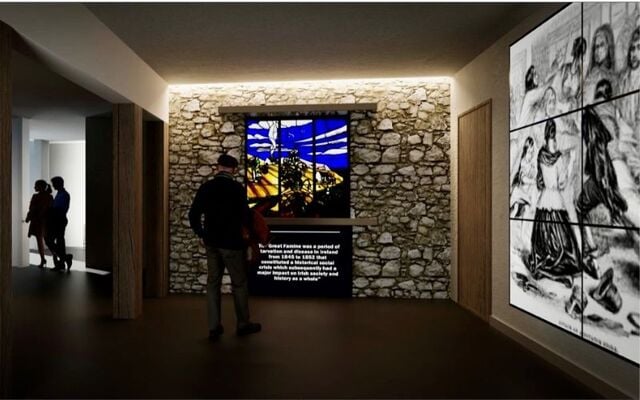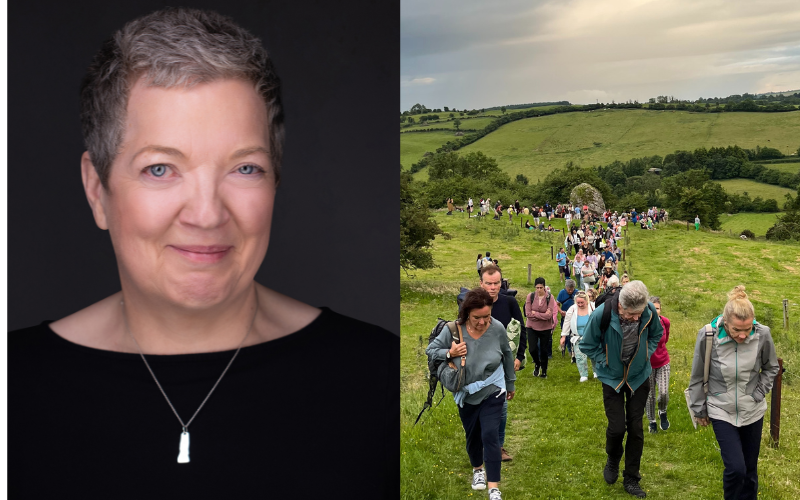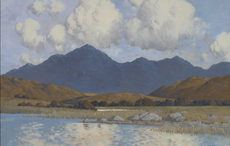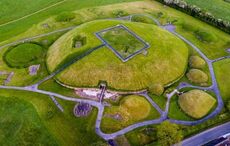Established in 2022 as a non-profit organization, Ireland’s Great Hunger Museum of Fairfield (IGHMF), Connecticut, is dedicated to the preservation and broader public awareness of the world's most extensive collection of art related to An Gorta Mór, Ireland's Great Hunger. John D. Foley, Kerryman and President of IGHMF, directs this initiative.
"It is not just a museum; it is a monument to our history, a tribute to our ancestors, and, most importantly, an educational tool for future generations," stated Mr. Foley, who emigrated from Caragh Lake, County Kerry, in 1995.
His efforts are supported by a dedicated team of volunteers, each contributing diverse professional expertise, united by a strong connection to Ireland and a shared commitment to the museum's vision.
Previously housed at Quinnipiac University, the collection is being relocated following the closure of the former museum. IGHMF has agreed with Quinnipiac University to transfer the entire collection to a new facility in Fairfield, Connecticut. This facility will undergo renovation to meet contemporary museum standards.
This undertaking has received support from state and local government bodies, regional academic institutions, the Consulate General of Ireland in New York, the Gaelic American Club of Fairfield, and the County Leitrim Society of New York, among other notable organizations.
The selection of Fairfield as the museum's location is strategically advantageous. New York, New Jersey, and Connecticut were some of the primary destinations for Irish immigrants to the United States during The Great Hunger, a trend that has never ended.
Read more
A substantial population of Americans with Irish heritage resides within this tri-state area, suggesting a strong base of local interest and support, which has proved true since efforts to relocate the museum commenced. Logistically, Fairfield’s location offers accessibility via the I-95 corridor and the Metro-North New York to New Haven rail line, with Amtrak service also available in the vicinity. These factors, according to Mr. Foley, position Fairfield as an optimal setting, offering the potential for significantly greater public exposure than was previously possible.
Comprising 170 pieces, the collection includes historical works dating from the Great Hunger era, alongside contemporary pieces addressing the same theme. It features paintings, sculptures, and drawings by some of the most distinguished artists in this genre, including John Behan, Rowan Gillespie, Kieran Touhy, and Jack B. Yeats.
Recognizing that the adversities faced by the Irish population and the Irish diaspora from 1845 to 1852 remain relevant to contemporary global challenges, the museum intends to leverage the collection’s subject matter for its educational potential. Through comprehensive community programming, IGHMF will facilitate dialogue connecting this historical event with present-day issues.
An extensive schedule of lectures and courses, presented by artists, educators, historians, and cultural experts from Ireland and internationally, will relate Irish history to contemporary crises. These programs will explore subjects such as agriculture, nutrition, political science, global hunger and famine, housing shortages, homelessness, emigration, economics, and law.
Course content will be tailored for diverse audiences, ranging from elementary school students to graduate scholars and adults engaged in continuing education. Utilizing The Great Hunger as a historical framework, students will analyze contemporary situations in relation to past events, thereby enhancing their observational and critical thinking skills, while fostering a deeper empathy for diverse cultures.
Ongoing and recent global events offer numerous opportunities for such comparative study, with Ukraine and Gaza immediately coming to mind. Humanitarian crises stemming from natural, political, economic, and military factors persist in various regions worldwide, alongside ongoing societal challenges in numerous countries, including Ireland and the United States.
The museum will stand as a platform for cultural exchange, featuring events, workshops, and lectures facilitated by experts in their respective fields. Educational programs will encourage thorough examination of contemporary scenarios and the frequently intertwined systemic issues of inequality, racism, injustice, hunger, and poverty.
IGHMF aims to transcend its role as a repository of art and historical artifacts. It will serve as a cornerstone of its community and a vital center for lifelong learning. The museum is committed to fostering and broadening the understanding of The Great Hunger within present and future generations, with the goal of enabling the global community to avoid mistakes of the past.
Read more
The museum has several promotional and educational events scheduled in the near term, which may be of interest:
An Gorta Mór: Selections from Ireland’s Great Hunger Museum
Apr 11 – Aug 16 at Fairfield University’s Regina Quick Center for the Arts
A showcase of select pieces from IGHMF’s collection by Irish & Irish American artists.
Paul Muldoon Poetry Reading
7 Nov @ Sacred Heart University Community Theatre
Irish poet, T.S. Elliot & Pulitzer Prize winner Paul Muldoon reads select pieces of his Great Hunger-related poetry.
To learn more about The Great Hunger, the museum and its plans, please check out their website: www.ighmf.org.
This article was submitted to the IrishCentral contributors network by a member of the global Irish community. To become an IrishCentral contributor click here.




Comments